Japanese use tofu in everyday cooking, but do you know about the type called shima tofu? Tofu is a standard ingredient in Okinawa Prefecture, differing in flavor, hardness, and size from regular tofu. In this article, we will introduce the characteristics of Shima tofu, how it differs from other tofu, and recommended recipes.
What is Shima tofu?
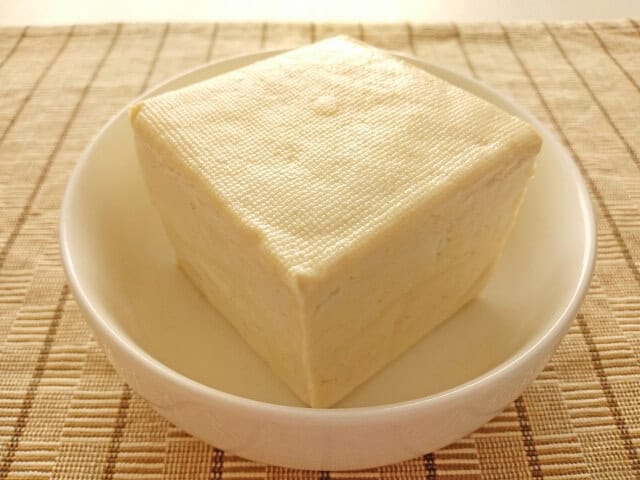
Shima tofu is a type of tofu from Okinawa Prefecture. It is also called Okinawa tofu. Shima tofu” is sometimes thought of as firm tofu suitable for dishes such as chanpuru. Namago, made by crushing soybeans soaked in water, is squeezed and divided into soy milk and raw okara. Shima tofu is then made by adding bittern, boiling it, putting it in a mould and weighing it, then draining it well and making it hard. The soybean has a strong flavor and a slight saltiness, so if you eat it in a way that allows you to enjoy the tofu itself, such as in hiyayakko, you can feel the original flavor even more.
Shima tofu History
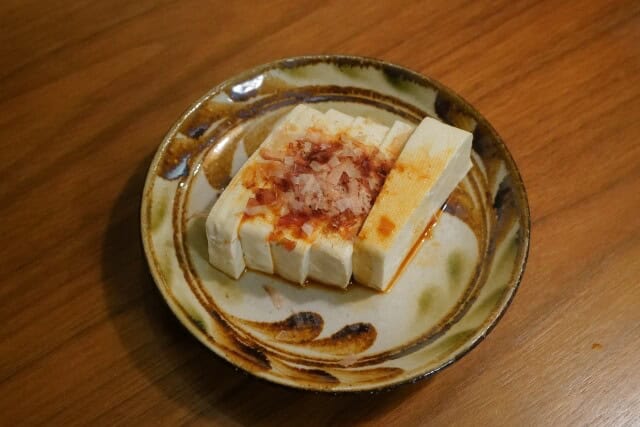
The rich and diverse food culture of Okinawa evolved over the centuries, drawing inspiration from the natural landscapes and environments of its numerous islands. This culinary heritage profoundly shaped by the cross-cultural interactions that have taken place on these islands, starting as far back as the 13th century. Throughout its history, Okinawan cuisine influenced by a myriad of external cultures, including those of Southeast Asia, China, and post-war America. This amalgamation of flavors and culinary traditions has contributed to the uniqueness of Okinawa’s food culture.
A standout component of Okinawan cuisine is “Shima tofu,” a tofu variety with a fascinating history. This tofu is crafted using locally cultivated soybeans and has a deep-rooted presence in Okinawa’s gastronomic heritage. It is a testament to the region’s self-sufficiency and the use of indigenous ingredients in its culinary practices. The presence of Shima tofu in Okinawan history is documented in the records of envoys who visited Ryukyu in 1683. These historical records reveal that even in that era, Naha city boasted numerous establishments where they produced and sold Shima tofu, underscoring the long-standing tradition of its production and consumption on the islands.
This historical continuity and the use of homegrown soybeans in Shima tofu production are emblematic of Okinawa’s commitment to preserving its culinary traditions while adapting to changing times and influences. The longevity of Shima tofu as a local staple serves as a testament to the enduring connection between the people of Okinawa and their unique food culture, which has continued to thrive and evolve over the centuries.
How does shima tofu differ from other tofu?
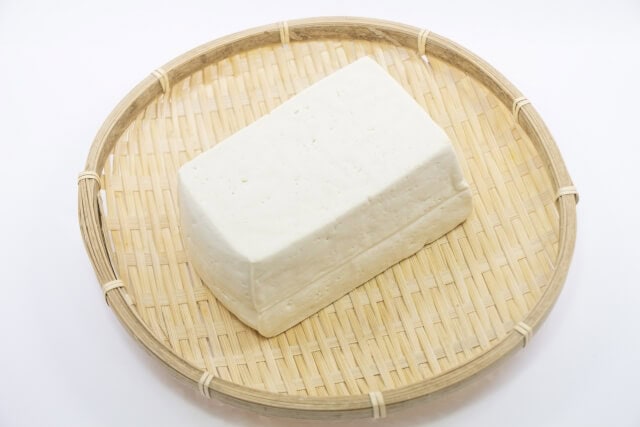
In comparison to other tofu varieties, one can note distinctions not only in terms of firmness, as previously mentioned but also in the manufacturing process.
The primary contrast lies in the timing of heat application during soy milk production. Shima tofu, for instance, is crafted by first extracting soy milk from raw soybeans and subsequently subjecting it to heat. This unique method yields variations in nutritional content. The proteins in soybeans are known to be heat-sensitive. As a result, island tofu, produced by heating soy milk after extraction, contains approximately 1.3 times more protein than traditional tofu.
Although there are differences depending on the product, island tofu is relatively larger than other types of tofu. While regular tofu weighs 300-400g per block, island tofu weighs 800-1000g per block, more than twice as heavy.
Additionally, when it comes to flavor, island tofu offers a richer and more pronounced taste when savored. While the superiority of one tofu type over the other in terms of taste is subjective, they can be selected to complement and enhance different dishes.
Other dishes that use Shima Tofu
Shima Tofu bitter gourd champuru
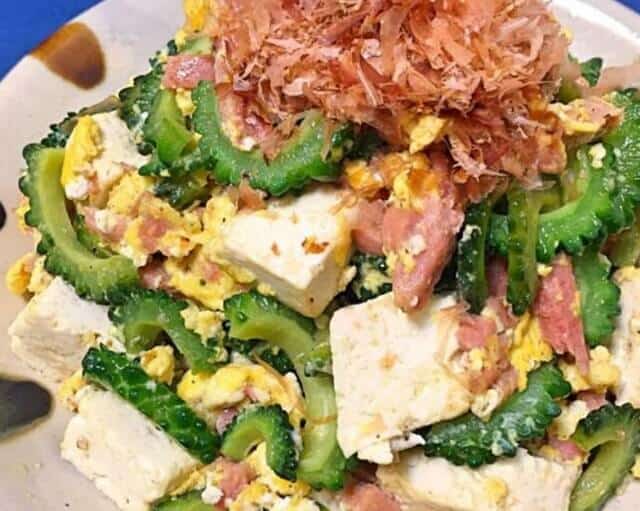
The combination of the slight bitterness and crunch of the bitter gourd and the fluffy egg is exquisite. The sweet seasoning is perfect for rice. The fragrant aroma of sesame oil also stimulates your appetite.
Bean sprout curry chanpuru
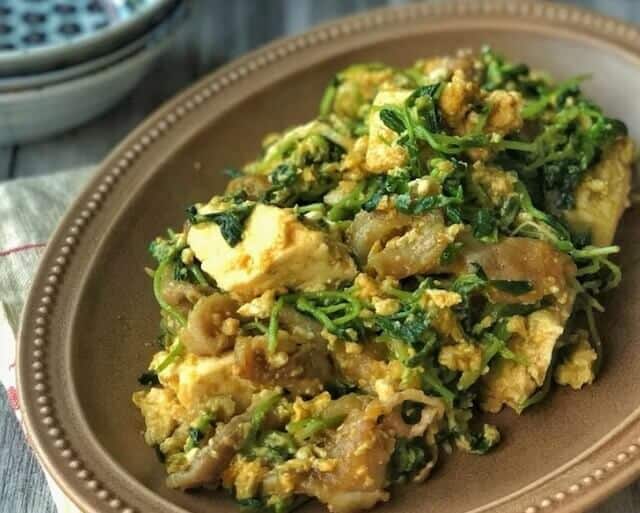
This is a champuru recipe made with shredded island tofu and pork. This unique curry-flavored dish is spicy and appetizing. It can be made quickly in just 10 minutes, so it’s useful when you’re busy.
Shima tofu and bonito tataki rolls
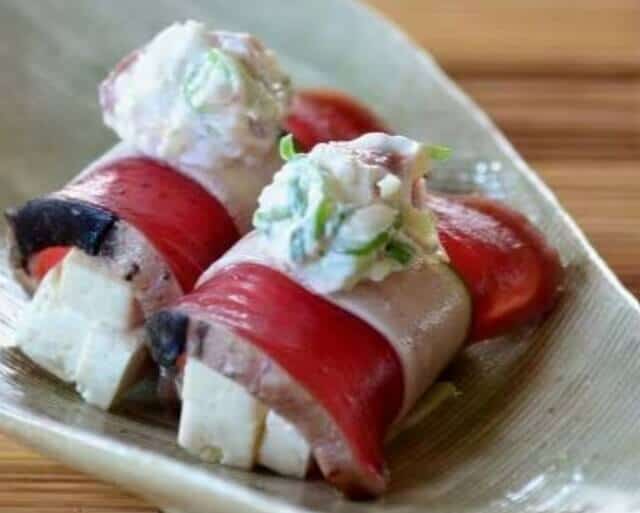
This dish is made by wrapping island tofu in a seared bonito and putting cream cheese on top. The salty flavor of Shuto in the cream cheese goes well with the bonito. It also contains ginger and ginger, so it has a pleasant aroma and is very refreshing.
Shima tofu FAQ
- What is the standard way to eat island tofu?
The standard way to eat island tofu is as chanpuru, a local Okinawan dish. Island tofu is harder than other types of tofu, so it doesn’t lose its shape easily when stir-fried, which is nice. In addition to bitter gourd champuru, it is indispensable for a variety of chanpuru in Okinawa, including fu chanpuru and somen champuru.
- What are the characteristics of Shima tofu?
Shima tofu is characterized by its firmness compared to tofu commonly found in other regions, and one characteristic of Shima tofu is that it is heavy and large, weighing between 900 grams and 1 kilogram. Okinawa has a hot, subtropical climate, so regular tofu with a high moisture content spoils quickly and does not last long, but by thoroughly removing moisture, the tofu has a better shelf life, making it suitable for Okinawa’s climate.
Shima tofu Recipe
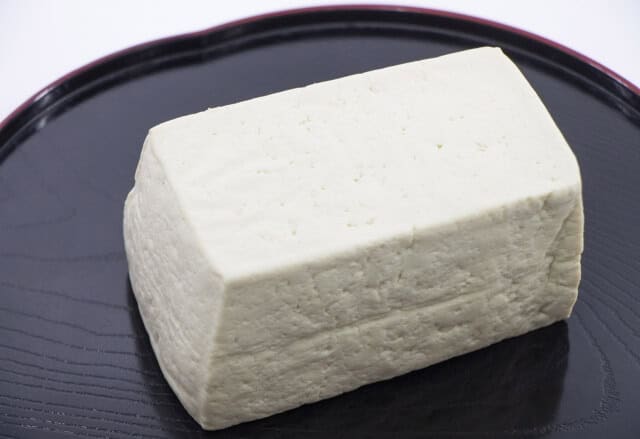
Shima tofu Ingredients
| Ingredients of Shima tofu for 2 persons | Measurements |
|---|---|
| Soy | 300g |
| Water | 1200g |
| Bittern | 200g |
| Salt | 3g |
| Hot water | 50g |
How to make Shima tofu?
Begin by soaking 300g of soybeans in 1200cc of water overnight. After the soaking process, drain the soybeans, which should now weigh approximately 700g.
Divide the soybeans into two equal batches. Combine one batch of soybeans (about 350g) with 1000cc of water to create the raw gourd mixture. This mixture may have a distinctive odor.
Utilize a strainer bag to separate the raw gourd into okara (the solid part) and soy milk (the liquid portion). This step may require some effort. Then, gently heat the soy milk over low heat, maintaining a temperature range of 70-80 degrees Fahrenheit.
Turn off the heat, dissolve bittern and salt in hot water, and gradually add this mixture to the soy milk while being cautious not to overmix. Allow the mixture to sit for approximately 20 to 30 minutes until clumps separate and clear juice forms, signifying success.
Line a tofu mold with a cloth, place the tofu inside, apply weight on top, and let it harden for another 20 to 30 minutes. Finish the process by rinsing the tofu with water to remove the bittern, leaving you with delicious Shima Tofu.
Where to buy Shima tofu?
Tofuya Beans (とうふ屋 Beans)
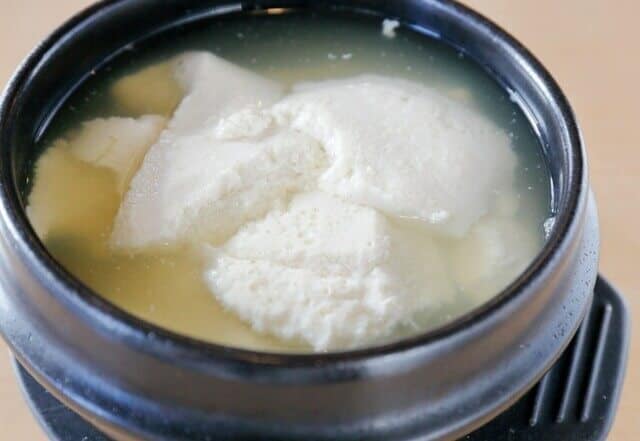
It is a restaurant that serves Okinawan Yushi tofu with a modern twist. Healthy Yushi tofu made with salty and Japanese-style soup stock that allows you to enjoy the simple taste. There is also a variety of menu items, including “Tomato Cheese Yushi Dofu”, “Mabo Yushi Dofu”, “Seafood Tomato Yushi Dofu”, and “Happo Tofu”, which are variations on Yushi Tofu.
Cafe Soy labo (Cafe ソイラボ)
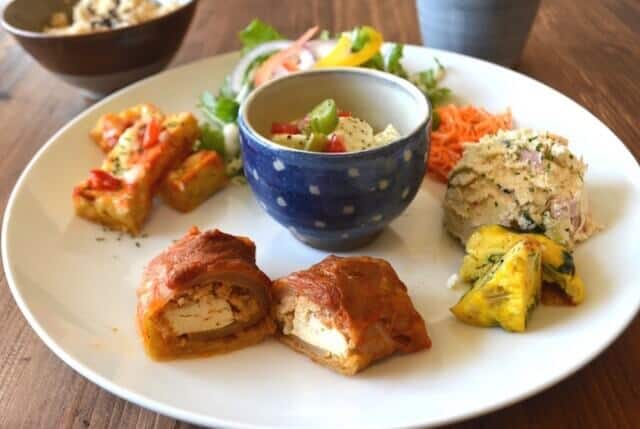
The restaurant offers a variety of healthy dishes that are gentle on the body, using island tofu, domestic soybeans, and Okinawan vegetables. Lunch plates include tofu cabbage rolls, okara salad, tofu quiche, and deep-fried tofu pizza.
Ikeda Foods Co., Ltd. (有限会社池田食品)
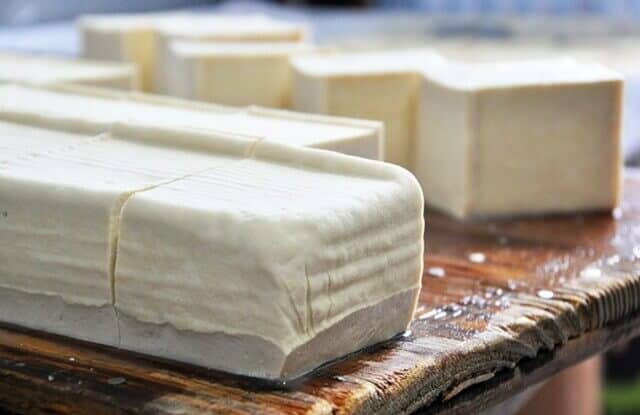
They make their island tofu made using 100% seawater bittern from Chatan, which is essential for making tofu, and is cooked directly in a traditional pot called a jigama. Popular items include handmade potted tofu, mini tofu, shimaganmo, okara irichi, and rich soy milk.
Takeaway
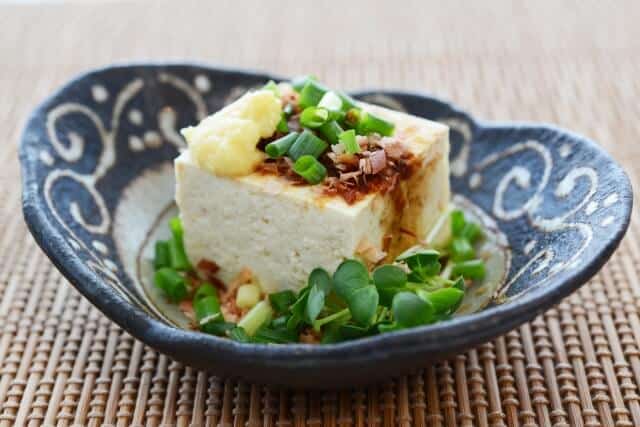
In Japan, Shima Tofu is a special treat that captures the essence of the country’s unique food culture. Its delicate taste and rich history make it a must-try when you visit Japan. So, the next time you’re in this beautiful land, be sure to savor a taste of Shima Tofu. You won’t be disappointed; it’s a delicious experience waiting to be discovered on your journey through Japan.
You can check some Japanese tofu dishes that we know you would like to try too.



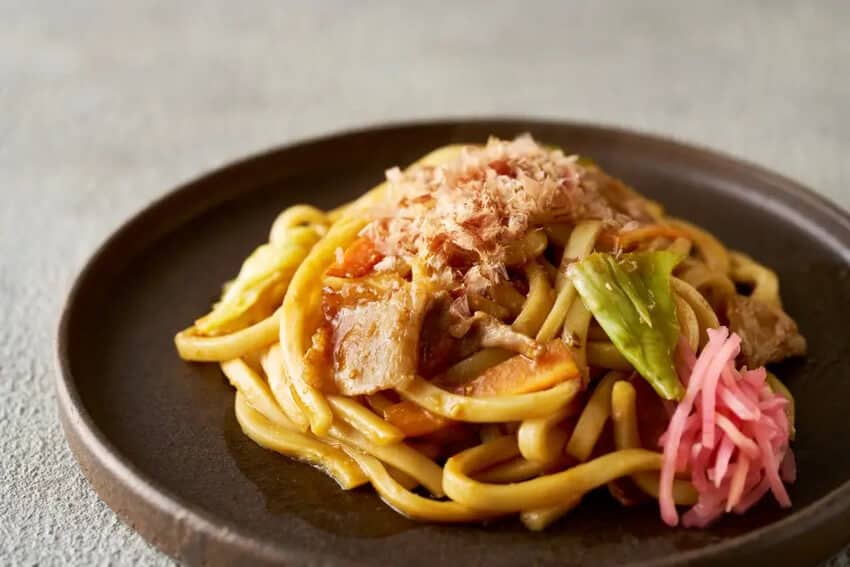
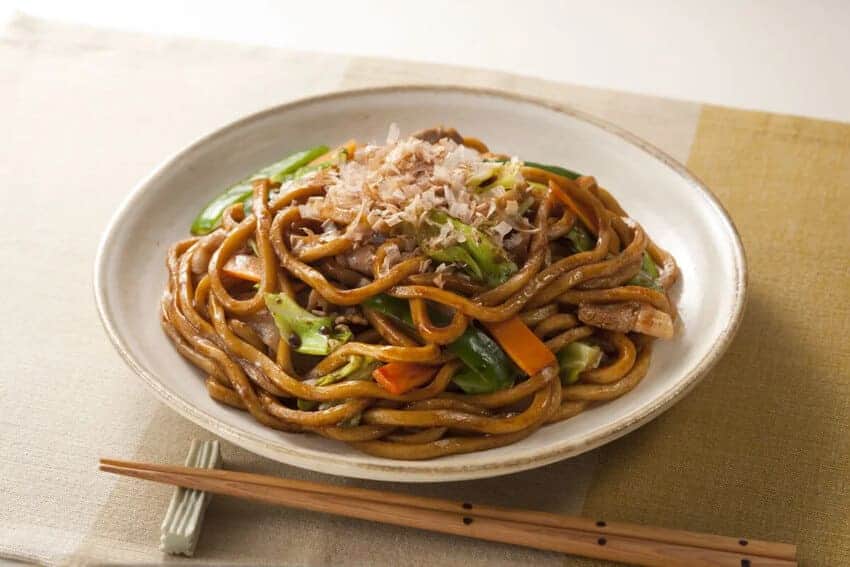

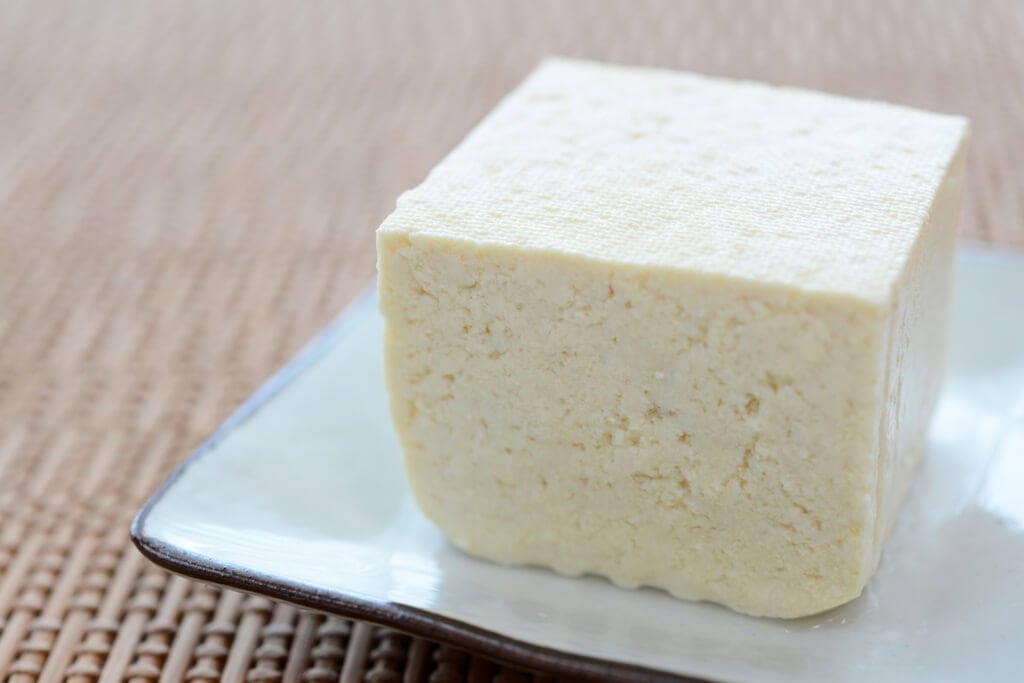
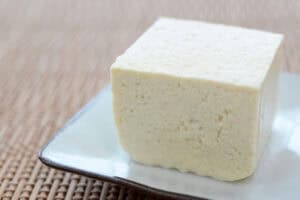
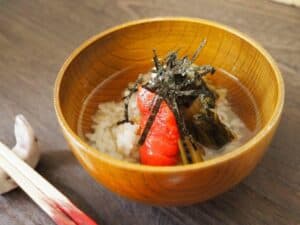
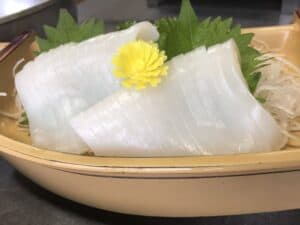
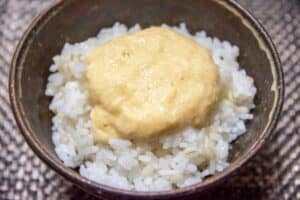
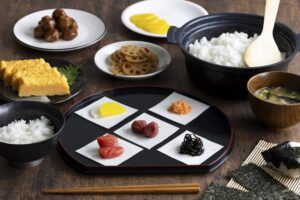
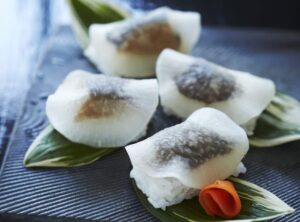
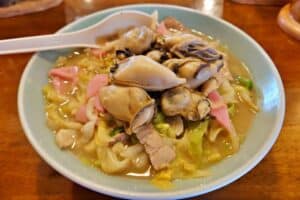
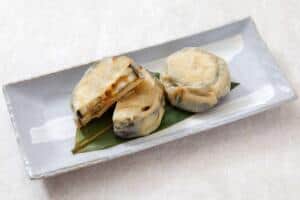
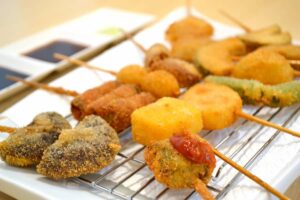
Comments